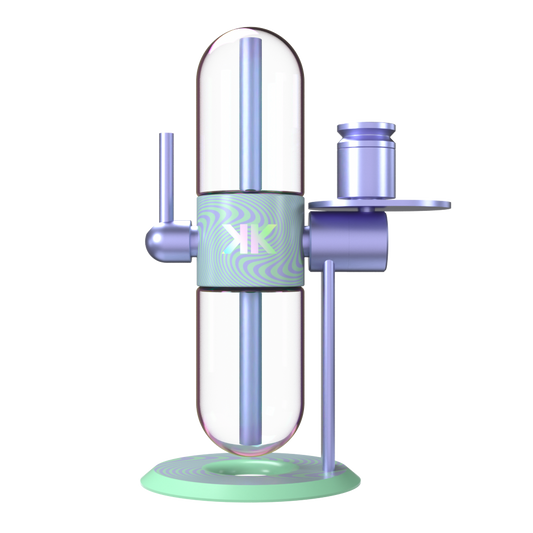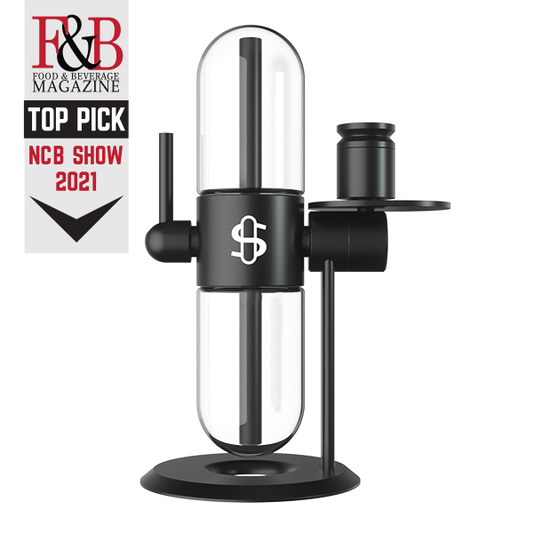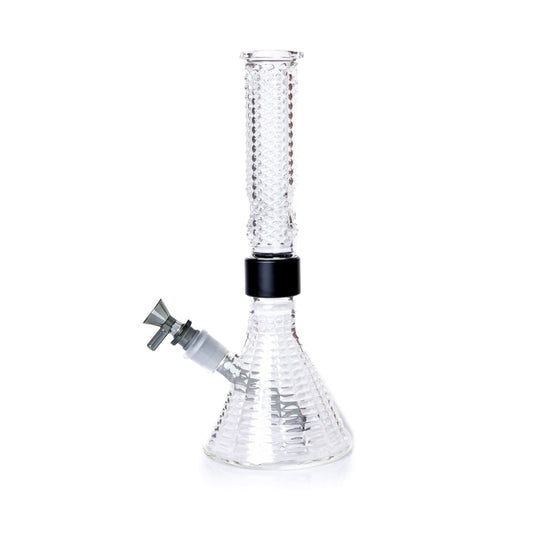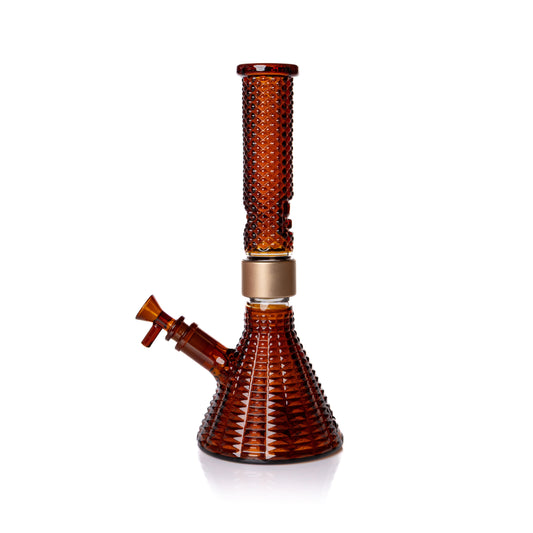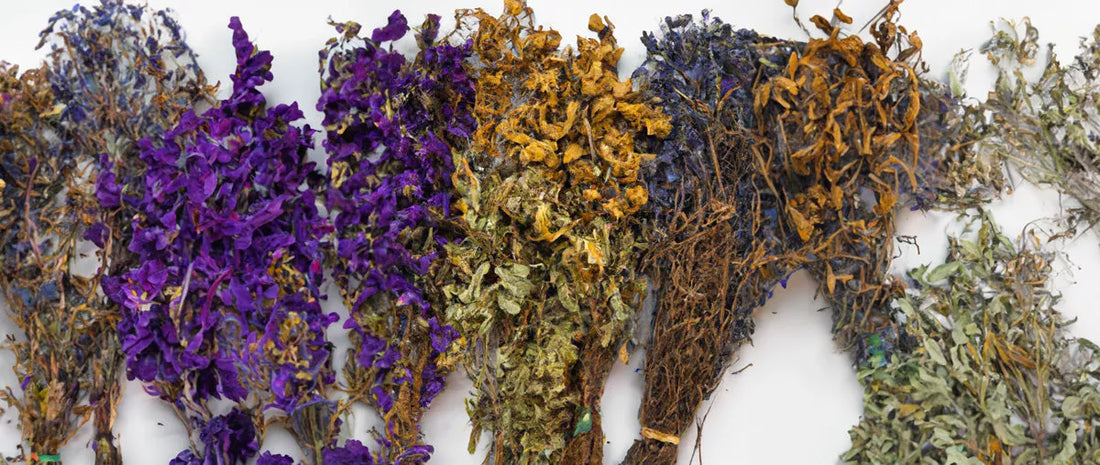
Dry Herb Vaporizing: From Cannabis to Medicinal Herbs
Share
In this article, we're going to explore how to combine herbs with cannabis for use in a dry vaporizer. The fascinating mix of herbs for vaporizing creates a mesmerizing experience that engages our senses on different levels. It's a modern approach that allows us to enjoy the benefits of combining medicinal herbs with cannabis in a convenient and enjoyable manner.
Dry herb vaporizers provide a versatile and enjoyable way to experience the benefits of various herbs. While vaping cannabis alone remains popular, the world of herbal blends and recipes offers unique flavors and effects to explore. Let's delve into the benefits of using a dry herb vaporizer, explore different herbs that can be vaporized, learn how to create personalized herb blends, and discover some intriguing recipes to try.
Benefits of Using a Dry Herb Vaporizer:
Dry herb vaporizing has gained popularity as a preferred method for consuming cannabis and other dry herbs due to its healthier nature compared to smoking. It avoids the production of carcinogens and other harmful by-products. Additionally, using a dry herb vaporizer enhances the overall experience by providing richer flavors and maximizing effectiveness.
Each dry herb, including cannabis, has an optimal temperature range for vaporization. By heating the herb within this range, you can enjoy its benefits without combustion and the associated smoke and toxins. Dry herb vaporizers offer precise temperature control, allowing for experimentation and customization, unlike traditional smoking methods.
Unlike vaping concentrated oils, using dry herbs in vaporizers offers more flexibility and creativity. You can easily blend different herbs and cannabis to create a personalized and unique experience. This versatility sets dry herb vaporizers apart from oil concentrates.
Exploring Different Herbs for Dry Herb Vaporizers:
One of the exciting aspects of using dry herb vaporizers is the ability to create personalized herb blends. By combining different herbs, you can tailor the flavor and effects to suit your preferences. Experimenting with various combinations allows for a truly customized vaping experience. However, it's crucial to ensure that the herbs you choose are safe for vaping and do not pose any health risks. If you're unsure, conduct thorough research or seek guidance from experts in the field.
If you're interested in creating your own smoking blend by combining herbs with cannabis, here are some popular options along with the recommended ratios:
- Mullein: Up to 30%, recommended temperature range between 175°C (347°F) to 190°C (374°F) - Adding mullein can help achieve a smoother smoke and reduce throat irritation.
- Rose petals: Up to 10%, recommended temperature range between 150°C (302°F) to 175°C (347°F) - Dried rose petals improve flavor and fragrance and may offer mild euphoric benefits.
- Jasmine: Up to 10%, recommended temperature range between 160°C (320°F) and 180°C (356°F) - Dried jasmine flower has a neutral, sweet fragrance, enhances relaxation, and may increase arousal.
- Lemon balm: Up to 25%, recommended temperature range between 142°C (288°F) to 157°C (315°F) - Lemon balm has a sweet and citrusy flavor, is relaxing and balancing, and pairs well with sativa strains.
- Mugwort: Up to 50%, recommended temperature range between 150°C (302°F) to 175°C (347°F) - Mugwort has psychoactive effects when smoked, enhances out-of-the-box thinking and creativity, and softens the smoke.
- Passionflower: Up to 25%, recommended temperature range between 150°C (302°F) and 170°C (338°F) - Passionflower contains compounds that balance emotions and may boost euphoric effects. It was also used as an aphrodisiac.
- Mint: Up to 15%, recommended temperature range between 140°C (284°F) and 175°C (347°F) - Mint adds a refreshing flavor and can potentiate the effects of cannabis. It can be a good substitute for menthol cigarettes.
- Lavender: Up to 15%, recommended temperature range between 130°C (266°F) to 160°C (320°F) - Lavender has a calming effect, smooths out the smoke, and offers a pleasant aroma.
- Blue lotus flower: Up to 50%, recommended temperature range between 180°C (356°F) and 200°C (392°F) - Blue lotus flower enhances the qualities of marijuana and may increase the vividness of dreams.
- Blue vervain: Up to 25%, recommended temperature range 150°C (302°F) to 175°C (347°F) - Blue vervain has relaxing effects, reduces stress and tension, and may aid in lucid dreaming.
- Chamomile: Up to 25%, recommended temperature range between 190°C (374°F) and 210°C (410°F) - Chamomile enhances the relaxing effects of cannabis and contributes a pleasant aroma.
- Damiana: Up to 25%, recommended temperature range between 190°C (374°F) to 210°C (410°F) - Damiana adds a soft flavor and fragrance, enhances the mind-expanding effects of cannabis, and has aphrodisiac qualities.
- Sage: Up to 25%, recommended temperature range between 175°C (347°F) to 190°C (374°F) - Sage intensifies the high produced by marijuana, has purifying qualities, and reduces the harshness of the smoke.
- Kanna: Up to 25%, recommended temperature range between 160°C (320°F) and 180°C (356°F) - Kanna is traditionally smoked for uplifting benefits, reduces anxiety, and relieves overthinking or overstimulation.
- Tobacco: Up to 50%, recommended temperature range between 220°C (428°F) and 250°C (482°F) - Tobacco can be added to create a stimulating smoke blend and enhance the effects of marijuana.
- And of course, Cannabis: As much as you prefer, recommended temperature range between 320°F(160°C) – 356°F(180°C) - Cannabis can provide pain relief, relaxation, stress reduction, increased creativity, enhanced mood, improved sleep, and potential therapeutic effects for certain medical conditions.
These ratios and temperatures are recommended as a starting point, but feel free to adjust them based on your personal preferences and desired effects. Experimenting with different herbal blends and ratios will help you find the mixtures that work best for you.
Creating Your Own Herb Blends:
Creating a blend can be approached by categorizing the herbs into four categories: the base, herbs with a supportive role, flavoring herbs, and herbs for adding body. By understanding the purpose of each category, you can craft a personalized herbal smoking blend. Additionally, if you prefer vaping over smoking, it's worth noting the optimum vaping temperatures for the herbs.
The Base: For the base of your herbal blend, it's ideal to use light and fluffy herbs. Excellent choices include mullein, red raspberry, and damiana. You can experiment with various combinations of these herbs when developing your own recipes. Be sure to consider the optimum vaping temperature for your base herb.
Herbs with a Supportive Role: To promote lung health or support the nervous system, consider incorporating herbs that fulfill these roles into your smoking blend. Herbs such as horehound, mullein, hyssop, thyme, marshmallow, and lobelia can support lung health. For the nervous system, consider using herbs such as skullcap, passionflower, mugwort, hops, catnip, rose, and damiana. The optimum vaping temperatures vary for each herb.
Flavoring Herbs: To add flavor to your smoking blend, include herbs known for their aromatic qualities. Good candidates for flavoring include angelica, peppermint, spearmint, monarda, lavender, and anise. The optimum vaping temperatures vary for each herb.
When formulating your vaping blend, the ratio of ingredients is a personal decision. You can start by measuring in parts, such as tablespoons, to create a small amount. Keep notes on your recipes to replicate the ones you enjoy in larger quantities.
To craft your herbal smoking blend, gently rub the base herbs between your hands to fluff them up, aiding in carrying the other ingredients. If using leaves or flower petals, crumble them into small pieces. (This applies for smoking the herbs as well. For rolling papers, consider powdering any roots or barks, while a coarser texture is suitable for pipes.)
Combine all the ingredients in a small bowl and mix them evenly. Remember to account for the dryness of your smoking blend. Properly curing your herbs can make a big difference in the final quality of your session. We recommend taking a slice of orange or lemon peel and placing it in a sealed stash jar with your herbs for a few hours. The herbs will absorb the moisture without becoming too damp. Be sure to remove the peel for long-term storage, and then replace it with a humidity pack.
Basic Recipe for Dry Herb Vaporizers:
Whether you're looking for relaxation, mental focus, or mood enhancement, there's a recipe to suit your needs. Get creative and discover new blends that resonate with your tastes and desired outcomes. Here's a basic formula:
- 2 parts base herb(s)
- 1 part of supporting herb(s)
- ½ part of flavoring herb(s)
Dry herb vaporizers offer a healthier and more customizable alternative to smoking. By utilizing a wide range of herbs and exploring different blends and recipes, you can enhance your vaping experience and enjoy a variety of flavors and effects. Remember to prioritize safety and consult with professionals if you have any concerns. Embrace the world of dry herb vaporizing and unlock the full potential of these fascinating herbs.

